Timber is the material of choice in many of the Japanese architect’s built works. Our Singapore Editor, Janice Seow, takes a look at three recent projects in Japan and further afield.
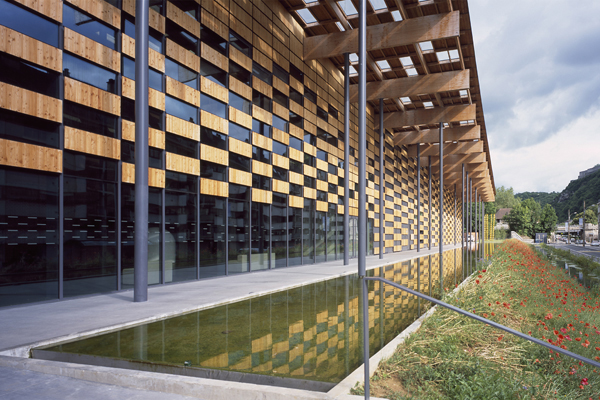
September 6th, 2013
Top image: Besançon Art Center and Cité de la Musique, France. Photo © Erieta Attali
Garden Terrace Miyazaki
Located on the site of a former factory, Garden Terrace Miyazaki is a single, two-storey building with bamboo-clad walls and a sloping roof. The hotel’s facilities – guest rooms, banquet room and restaurants – surround the central courtyard and wedding chapel; at the entrance, a faceted timber canopy leads through to a reception area where guests can also enjoy a view of the courtyard.
Garden Terrace Miyazaki’s calm and tranquil environment is enhanced with a landscape of bamboo trees and pools of water.
Type: Hotel
Location: Miyazaki, Japan
Completion: 2012
Besançon Art Center and Cité de la Musique
Situated on the banks of the Doubs river in Besançon, France, this project comprises the Besançon Art Centre, which includes a gallery for regional collections and an art college, and the Cité de la Musique, a music school with its own auditorium.
A single roof connects the pair of timber-clad three-storey buildings, and creates a sheltered terrace in the space between.
Capt Besançon Art Center and Cité de la Musique, France. Photo © William Wattefaugle
The facade is made of steel and glass panels interspersed between a chequerboard of timber, which creates different transparencies to the various spaces inside the two buildings. Reception areas are filled with natural light, while classrooms and exhibition galleries are made more opaque.
Type: Art Centre
Location: Besançon, France
Completion: 2012
Sunny Hills
This yet to be completed project is a shop selling pineapple cakes – a popular sweet in Taiwan and various countries in Asia.
The space is built on a joint system called “Jiigoku-Gumi”, a traditional method used in Japanese wooden architecture (often observed on Shoji doors and room dividers where wooden strips come together to form a muntin grid).
While the two pieces normally intersect in two dimensions, here they are combined in 30 degrees and in 3 dimensions, which results in a structure resembling a cloud.
The building is located in middle of the residential area in Aoyama. Kengo Kuma and Associates say that the aim was to move away from the idea of a hard “concrete box” in favour of a softer form.
Type: Retail
Location: Omotesando, Tokyo, Japan
Completion date: end 2013
Kengo Kuma and Associates
INDESIGN is on instagram
Follow @indesignlive
A searchable and comprehensive guide for specifying leading products and their suppliers
Keep up to date with the latest and greatest from our industry BFF's!
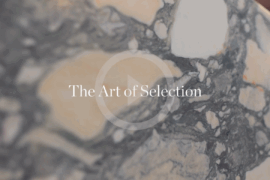
CDK Stone’s Natasha Stengos takes us through its Alexandria Selection Centre, where stone choice becomes a sensory experience – from curated spaces, crafted details and a colour-organised selection floor.
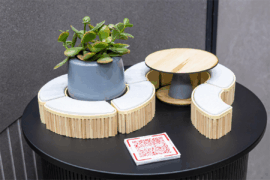
From the spark of an idea on the page to the launch of new pieces in a showroom is a journey every aspiring industrial and furnishing designer imagines making.
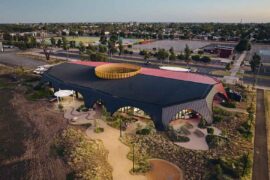
At the Munarra Centre for Regional Excellence on Yorta Yorta Country in Victoria, ARM Architecture and Milliken use PrintWorks™ technology to translate First Nations narratives into a layered, community-led floorscape.

Through insight and expertise, INDESIGN Luminary Jefa Greenaway has forged a career highlighting Indigenous perspectives in architecture and design. He’s a powerful force for change and a man to be followed.
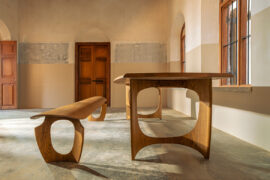
Architect, designer and craftsman Adam Markowitz bridges the worlds of architecture and fine furniture, blending precision, generosity and advocacy to strengthen Australia’s craft and design community.

Jan Henderson dives into the topic of Sustainability from a product level, featuring some of our event partners!

In an exclusive interview with one of the most iconic figures on the international design scene, Cappellini’s charismatic art director talks about design that transcends time and geographical context, embraces diversity – and captures the elusive essence of our times.
The internet never sleeps! Here's the stuff you might have missed
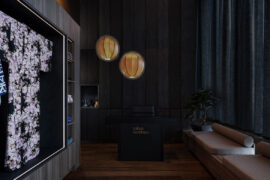
Making a splash on the hair spa scene, the latest project from X + O makes a little slice of Japan right at home in suburban Melbourne.
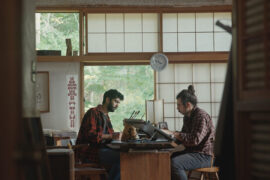
AHEC has produced a documentary exploring forestry and stewardship through long-term forest management and human responsibility.
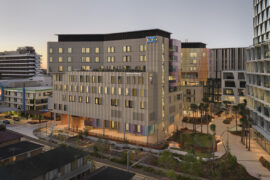
BLP’s new Sydney Children’s Hospital, Randwick building brings together paediatric care, family-centred design and Australia’s first Children’s Comprehensive Cancer Centre in a major addition to the Randwick Health & Innovation Precinct.